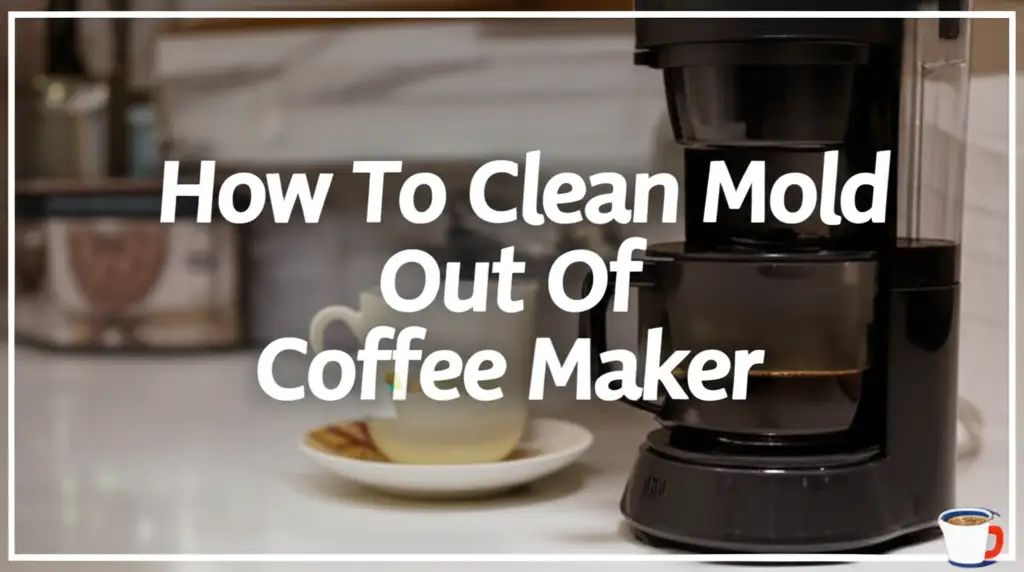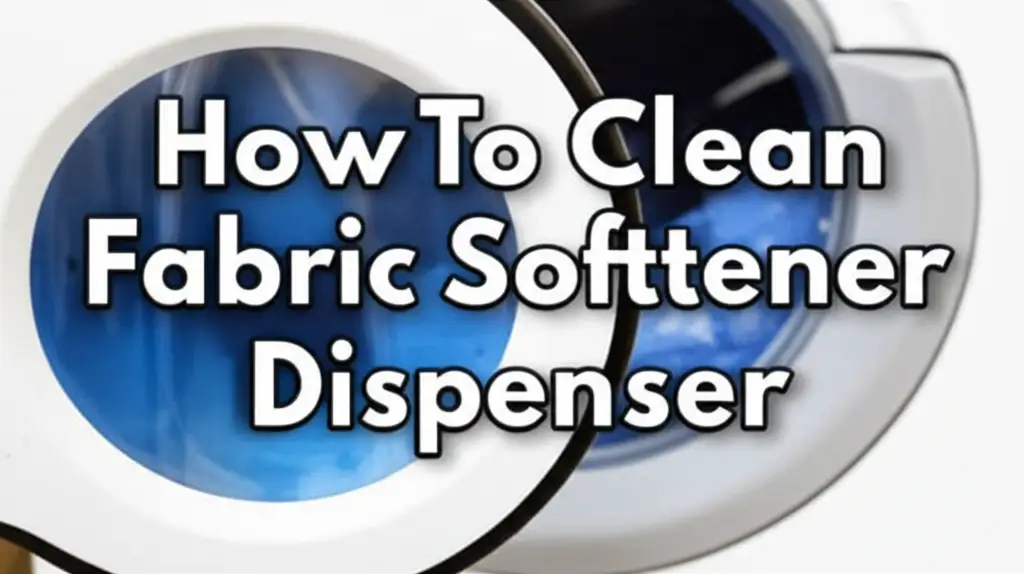· Home Cleaning · 16 min read
How To Clean Mold Out Of Coffee Maker

Banish Coffee Maker Mold: A Complete Cleaning Guide
Few things start your day better than a fresh cup of coffee. But what if your beloved coffee maker harbors unwelcome guests? Mold can easily grow in the damp, warm environment of your brewing machine. Discovering fuzzy spots or a musty smell means it is time to clean mold out of your coffee maker. This guide helps you restore your machine to its clean, safe state. I will show you how to tackle mold effectively. We will cover common causes, the right tools, and step-by-step cleaning methods. You will learn natural cleaning solutions and tips for preventing future mold growth. Let’s make sure every brew is fresh and clean.
Takeaway:
- Identify mold signs like smell or visible spots.
- Gather simple cleaning supplies, including vinegar or bleach.
- Clean all parts of your coffee maker thoroughly.
- Practice regular maintenance to prevent mold.
To clean mold out of a coffee maker, use a strong cleaning solution. A mixture of equal parts white vinegar and water often works best. Run several cleaning cycles with this solution. Then, scrub visible mold with a brush. Rinse all parts completely. This process removes existing mold and sanitizes the machine.
Why Mold Grows in Your Coffee Maker
You might wonder why mold appears in your coffee maker. Coffee makers offer mold a perfect home. These machines stay warm and moist for long periods. After you brew coffee, water remains in the reservoir and tubes. Coffee grounds also leave residue. This creates an ideal environment for mold spores to thrive. Mold spores exist everywhere in the air. They settle in damp places and start to grow.
Ignoring mold can pose health risks. Breathing in mold spores can affect your respiratory system. It can cause allergy symptoms like coughing or sneezing. Some mold types produce toxins. These toxins can lead to more serious health issues. Drinking coffee from a moldy machine means you consume these spores. This can upset your stomach. It is important to address mold quickly for your health.
Many people clean their coffee makers only when they notice a problem. But mold can grow unseen. It often hides in tubes or the water reservoir. Regular cleaning stops mold before it becomes a big issue. A routine cleaning schedule ensures you catch mold early. This protects your health and keeps your coffee tasting great. Preventing mold is easier than cleaning it once it takes hold.
The dark, enclosed spaces inside coffee makers also help mold grow. Light inhibits some mold growth. But your machine’s internal parts stay dark. This further encourages mold colonies. Always empty your machine and let it air dry after each use. This simple step helps reduce moisture. It makes your coffee maker less inviting for mold.
Essential Supplies for Mold Removal
Before you begin, gather your cleaning supplies. Having everything ready makes the process smoother. You probably have most items at home already. These tools help you clean mold from your coffee maker safely and effectively. Choosing the right products is crucial for success.
You will need white vinegar. Vinegar is a natural acid. It effectively kills mold and breaks down mineral deposits. It is also safe for food contact after rinsing. Another option is baking soda. Baking soda helps scrub away mold and absorbs odors. Together, vinegar and baking soda form a powerful cleaning duo for your appliance. For general cleaning tasks, many people find that using vinegar and baking soda together works wonders.
For tougher mold, you might consider bleach. However, use bleach with extreme caution. Bleach is a strong disinfectant. It kills mold but requires thorough rinsing. Never mix bleach with vinegar. This combination creates toxic gas. Ensure proper ventilation if you use bleach. Always follow product instructions carefully.
You also need cleaning tools. A soft brush or an old toothbrush is perfect for scrubbing tight spots. Sponges or cloths work for larger surfaces. Paper towels are useful for drying. A small basin or sink will hold parts during cleaning. These simple items help you reach every crevice.
- White Vinegar: Essential for natural mold killing and descaling.
- Baking Soda: Aids in scrubbing and odor absorption.
- Bleach (Optional, with caution): For very stubborn mold, but use carefully.
- Soft Bristle Brush/Old Toothbrush: Reaches tight corners and crevices.
- Sponges/Cloths: For wiping surfaces.
- Paper Towels: For drying components.
- Small Basin/Sink: For soaking and rinsing parts.
Ensure you have gloves to protect your hands. Mold can irritate skin. Wearing gloves also keeps your hands clean. Proper preparation ensures you tackle the mold effectively.
Step-by-Step Deep Cleaning for Mold
Cleaning mold out of your coffee maker requires a thorough approach. You need to address all parts, visible and hidden. This multi-step process ensures no mold remains. Take your time with each step for best results. This is how you completely sanitize your machine.
First, unplug your coffee maker. Safety comes first. Remove any detachable parts. This includes the water reservoir, brew basket, filter holder, and carafe. Discard any old coffee grounds and filters. Rinse these parts under warm water to remove loose debris. This initial rinse prepares them for a deeper clean.
Cleaning the Water Reservoir
The water reservoir is a common spot for mold. It holds standing water, which mold loves. Fill the reservoir with a solution of equal parts white vinegar and water. For a standard 12-cup coffee maker, about 4-6 cups of each works well. Let this solution sit for 30 minutes. This allows the vinegar to break down mold and mineral deposits.
After soaking, run a full brewing cycle with the vinegar solution. Do not add coffee. This sends the cleaning solution through the internal tubes. Repeat this cycle two to three times. This ensures the vinegar reaches all internal components where mold might hide. For cleaning appliances like dishwashers, vinegar and baking soda are also effective solutions.
After the vinegar cycles, empty the reservoir. Fill it with fresh water. Run two to three more full brewing cycles with just plain water. This rinses out all vinegar residue. You do not want vinegar taste in your next cup of coffee. Ensure no vinegar smell remains.
Scrubbing the Brew Basket and Filter Area
The brew basket and filter area also collect coffee residue and moisture. These areas can harbor mold. Use a soft brush or an old toothbrush. Dip the brush in the vinegar solution you used earlier. Scrub all surfaces of the brew basket. Pay special attention to corners and crevices. Mold can cling to these spots.
For the filter holder, scrub inside and out. Ensure you reach under any lips or edges. Rinse these parts thoroughly under running water. Inspect them closely for any remaining mold. If you see stubborn spots, repeat the scrubbing. A paste of baking soda and a little water can help with tough stains. Apply the paste, scrub, then rinse.
Make sure to clean the area where the brew basket sits on the coffee maker. Use a damp cloth with vinegar solution to wipe down this section. Clean the drip area as well. This prevents new mold from forming immediately. Let all parts air dry completely before reassembling.
Sanitizing the Carafe and Drip Tray
The coffee carafe and drip tray also need attention. The carafe can develop a film or mold growth from leftover coffee. Fill the carafe with warm, soapy water. Use a bottle brush or sponge to scrub the inside. For stubborn stains or mold, add a few tablespoons of baking soda to the water. Let it sit for 15-20 minutes.
Scrub the carafe thoroughly. Rinse it completely with fresh water. The drip tray collects spills and condensation. This area is often overlooked. Remove the drip tray and wash it with soap and water. Use a brush to clean any grimy spots. Rinse it well.
Wipe down the exterior of the coffee maker with a damp cloth. Use a mild soap solution if needed. Pay attention to buttons and handles. These areas collect germs. After cleaning all parts, let them air dry completely. Air drying is crucial for preventing new mold growth. Reassemble your coffee maker only when all parts are dry. This comprehensive cleaning ensures your machine is free of mold.
Natural Cleaning Solutions: Vinegar & Baking Soda
Natural cleaners offer a safe and effective way to clean mold from your coffee maker. White vinegar and baking soda are excellent choices. They are non-toxic and readily available. These natural ingredients tackle mold, odors, and mineral buildup without harsh chemicals. Many household cleaning tasks benefit from the power of vinegar and baking soda.
White vinegar is a weak acid. It kills mold by disrupting its cell structure. The acetic acid in vinegar is effective against many mold species. It also dissolves mineral deposits or “scale” that can build up in your coffee maker’s heating elements and pipes. This descaling process is important for machine performance. Using vinegar regularly prevents these issues.
To use vinegar, fill your coffee maker’s water reservoir with equal parts white vinegar and water. Run a brewing cycle without coffee. Discard the solution. Repeat this cycle two or three times. This ensures the vinegar reaches all internal parts. Next, run two or three cycles with plain water to rinse out the vinegar smell and taste. This method is simple and highly effective for general cleaning and mold prevention.
Baking soda is an alkali. It works as a mild abrasive and an odor neutralizer. For visible mold spots, make a paste of baking soda and a small amount of water. Apply this paste to the moldy areas. Let it sit for 5-10 minutes. Then, use a soft brush or sponge to scrub the mold away. The abrasive action helps lift the mold from surfaces.
Baking soda is also excellent for deodorizing. After cleaning with vinegar, if any musty smell remains, sprinkle baking soda into the carafe or brew basket. Let it sit for a few hours or overnight. Then rinse it thoroughly. Baking soda absorbs lingering odors.
Using these natural solutions keeps your coffee maker free from mold and harmful residues. They are safer for your family and the environment. I find them easy to use. These simple ingredients are often all you need. You can maintain a clean coffee maker without relying on strong chemicals.
Tackling Stubborn Mold: Bleach (Use with Caution!)
Sometimes, mold in a coffee maker can be very stubborn. For severe cases, bleach might be necessary. However, bleach is a powerful chemical. You must use it with extreme caution. Always prioritize safety when considering bleach for cleaning mold. Never mix bleach with other cleaning agents like vinegar. This combination creates toxic fumes.
Bleach is a strong disinfectant. It kills mold spores and removes stains effectively. To use bleach safely, create a very diluted solution. Mix one teaspoon of bleach per one gallon of water. This creates a weak bleach solution that is still effective. A stronger solution is not necessary and can be dangerous.
First, unplug your coffee maker. Disassemble all removable parts. Wash them thoroughly with soap and water first. This removes loose dirt and coffee residue. Then, submerge these parts in the diluted bleach solution. Let them soak for about 10-15 minutes. Do not soak for too long. Bleach can damage some plastics or metals over time.
For the main unit, pour the diluted bleach solution into the water reservoir. Run a brewing cycle without coffee. Allow the solution to cycle through the machine. After this cycle, empty the reservoir. Refill it with fresh water. Run at least three full cycles with plain water. This is crucial for rinsing out all bleach residue. You need to ensure no bleach smell remains.
- Safety First: Always wear gloves and ensure good ventilation.
- Dilution: Use one teaspoon of bleach per gallon of water.
- Soaking: Soak removable parts for 10-15 minutes.
- Running Cycles: Run diluted bleach through the machine, followed by at least three plain water cycles.
- Rinsing: Rinse all parts completely until no bleach smell is detectable.
After rinsing, let all parts air dry completely. This step is important before reassembling the coffee maker. I always check carefully for any lingering bleach scent. If I smell bleach, I rinse again. Bleach is a powerful tool. But it requires responsible use. For most mold issues, vinegar and baking soda are sufficient. Reserve bleach for only the most severe mold infestations.
Preventing Future Mold Growth
Preventing mold is far easier than cleaning it. With a few simple daily habits, you can keep your coffee maker mold-free. Consistent care ensures a hygienic brewing experience every time. I find these simple steps make a big difference.
First, always empty the water reservoir after each use. Do not leave standing water in the machine. Stagnant water is a prime breeding ground for mold. If you brew coffee in the morning, empty and dry the reservoir by the afternoon. This simple act removes the moisture mold needs to grow.
Next, wash all removable parts daily. This includes the carafe, brew basket, and filter holder. Use warm, soapy water. Rinse them thoroughly. Let them air dry completely before reassembling. Do not put damp parts back into the machine. Moisture trapped inside encourages mold. I often leave my parts on a drying rack overnight.
Regular deep cleaning is also vital. Aim to deep clean your coffee maker at least once a month. Use the vinegar solution method. This descales your machine and sanitizes internal components. Regular descaling prevents mineral buildup. It also removes any mold spores that might be starting to grow. This routine cleaning keeps your machine running efficiently and cleanly.
- Empty and Dry: Always empty the water reservoir after each use.
- Daily Wash: Wash removable parts daily with soap and water.
- Air Dry: Ensure all parts are completely dry before reassembly.
- Monthly Deep Clean: Perform a vinegar descaling and cleaning cycle monthly.
Consider leaving the reservoir lid open when the machine is not in use. This allows air circulation. Air circulation helps dry out the internal parts. It reduces humidity inside the machine. Proper airflow is a natural deterrent for mold.
For households with hard water, consider using filtered water. Hard water contains minerals that contribute to scale buildup. Scale provides surfaces for mold to cling to. Filtered water reduces mineral deposits. This makes your cleaning efforts more effective. By following these tips, you can enjoy mold-free coffee for years to come.
When to Consider a New Coffee Maker
Sometimes, despite your best cleaning efforts, a coffee maker might be beyond saving. It is important to know when to replace your machine. Continuing to use a machine with irreversible mold can pose health risks. I have found recognizing these signs helps protect my family.
One clear sign is persistent mold. If you clean your coffee maker thoroughly, but mold reappears quickly, it might be embedded too deeply. Mold can grow inside hoses and heating elements. These areas are impossible to clean manually. If mold keeps coming back within days of cleaning, the machine is likely compromised.
Another sign is a persistent musty smell. Even after multiple cleaning cycles, a lingering odor suggests hidden mold. This smell indicates mold colonies are still present. You do not want that smell affecting your coffee. A machine that always smells musty is not safe to use.
Visible damage can also indicate it is time for a new machine. Cracks in plastic components or corrosion on metal parts can create new hiding spots for mold. These damaged areas are hard to clean effectively. They can also leak or malfunction. A structurally unsound machine is a safety hazard.
- Persistent Mold: Mold reappears quickly after cleaning.
- Lingering Musty Smell: Odor remains despite thorough cleaning.
- Visible Damage: Cracks, corrosion, or leaks in components.
- Flavor Issues: Coffee consistently tastes off, even with fresh beans.
- Age and Performance: Machine is old, slow, or inconsistent.
If your coffee consistently tastes odd or “off,” even with fresh beans and clean water, mold might be the cause. Mold spores can affect flavor. No one wants coffee with a strange taste. This is a sign that the internal system is contaminated.
Finally, consider the age of your coffee maker. Coffee makers do not last forever. Older machines can develop internal issues that make them harder to clean. They may also become less efficient. Sometimes, the cost of trying to fix a very old, moldy machine outweighs the cost of a new, clean one. It is an investment in your health and your morning ritual.
Frequently Asked Questions
Can I get sick from a moldy coffee maker?
Yes, you can get sick from a moldy coffee maker. Mold spores can cause respiratory issues like coughing and sneezing, especially for those with allergies or asthma. Ingesting mold from your coffee can lead to digestive upset. Always clean mold promptly to protect your health.
How often should I clean my coffee maker to prevent mold?
Clean your coffee maker thoroughly with vinegar once a month to prevent mold and mineral buildup. For daily care, empty the water reservoir and wash removable parts after each use. Ensure all parts air dry completely before reassembly. Regular cleaning stops mold before it starts.
Is white vinegar safe to use in a coffee maker?
Yes, white vinegar is safe and effective for cleaning coffee makers. It is a natural acid that kills mold, disinfects, and descales mineral deposits. Always use an equal parts vinegar-to-water solution. Rinse the machine thoroughly with plain water afterward to remove any lingering taste.
Can I use dish soap to clean mold out of my coffee maker?
Dish soap helps clean removable parts. It can remove grime and some surface mold. However, dish soap does not effectively kill mold spores or descale internal components. For a complete mold removal and sanitation, you need a stronger agent like white vinegar.
What parts of a coffee maker are most likely to grow mold?
The water reservoir is the most common place for mold growth due to standing water. The brew basket, filter holder, and internal tubes also often harbor mold. Anywhere water and coffee residue collect and remain damp can become a mold breeding ground.
How do I remove the lingering vinegar smell after cleaning?
To remove the lingering vinegar smell, run two to three full brewing cycles with plain, fresh water after your vinegar cleaning. If the smell persists, you can try running a cycle with a solution of water and a few tablespoons of baking soda, then follow with more plain water rinses. Air drying completely also helps dissipate odors.
Conclusion
Finding mold in your coffee maker can be disheartening. But now you know how to clean mold out of coffee maker effectively. You can restore your machine to a pristine state. We have covered why mold grows, the right tools, and step-by-step cleaning methods. You also learned the power of natural solutions like vinegar and baking soda. Remember, caution is key if using bleach for stubborn cases.
The most important takeaway is consistent prevention. Emptying water, daily cleaning of removable parts, and monthly deep cleans are simple steps. These steps stop mold before it becomes a problem. Your health depends on a clean brewing environment. A clean coffee maker gives you safe, fresh-tasting coffee every single day. Do not let mold compromise your morning ritual. Take action now and enjoy a truly clean cup of coffee.
- coffee maker cleaning
- mold removal
- kitchen hygiene
- appliance maintenance
- household cleaning tips




